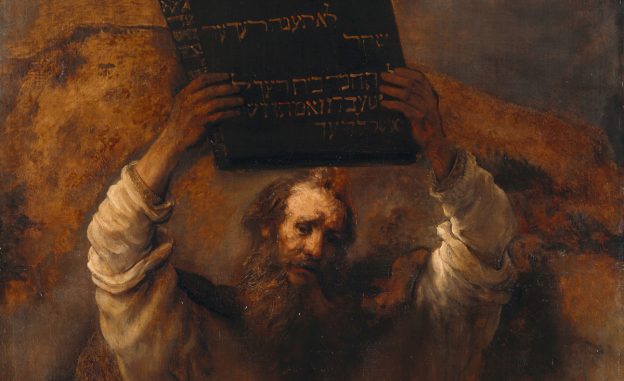Summary
What does God look like? It’s a question many children ask their parents. Perhaps we mentally think of God as an old man in a white sheet, like the painting on the roof of the Sistine Chapel. But should we think of God in this way?
While the First Commandment requires the exclusive worship of God, the Second Commandment requires us to worship God without creaturely representations of him. The consequences of doing so (or not) will reflect in how we teach our children about God, and have effects on the relationship of God to our descendants. Instead, we should worship and know God in the way in which he has revealed himself to us.
Our Passage Explained
v4
The Second Commandment begins with a command forbidding the making of images. “You shall not make for yourself a carved image, or any likeness of anything that is in heaven above, or that is in the earth beneath, or that is in the water under the earth” (v.4).
It is certainly true that this commandment forbids making physical idols of fake gods to worship, but the First Commandment has already forbidden the worship of anyone or anything except God. The main thrust of the Second Commandment is forbidding the making of images which supposedly represent God for worship.
The nations surrounding Israel made idols of wood, stone, or precious metals which represented their deities. Thus, the local deity might be represented by a bull or an eagle. Since there is a physical representation of the deity, there is a sense in which the deity is localised, and thus accessible and potentially controllable by people (eg, see Judges 18 where an idol is “liberated” by the Danites).
God is not local, and certainly cannot be controlled. He is not to be worshiped as we desire, but instead in the way he commands, and worshiped as he has revealed himself. God is spirit, and those who worship him must do so in spirit and in truth (John 4:24). God is Creator, and cannot (and must not) be confused with his Creation, whether as a person or a lion or a fish.
There is only one legitimate image of God in all Creation – human beings who are made in God’s image (Genesis 1:26). Jesus, as the foremost expression of humanity and the very image of the invisible God (Colossians 1:15) is the greatest legitimate expression of what God is like. Not in our physical characteristics, but in our mental, emotional, and spiritual capacity. To reduce God to a human statue misrepresents God.
v5-6
The seriousness of keeping this command is clear in the statement which God makes. “You shall not bow down to them or serve them, for I the Lord your God am a jealous God” (v.5). God takes the worship of statues or physical representations of him very seriously: they arouse jealousy.
While we tend to think of jealousy as a negative attribute (confusing it with envy), jealousy is good when it is expressed as a desire for what you are entitled to. God, as Creator, is entitled to worship solely of himself as he is, not as we imagine him, or shared with anything else. Anything other than the relationship God establishes threatens its integrity.
The integrity of the relationship is so important that for those who make false idols, God will punish “the iniquity of the fathers on the children to the third and the fourth generation of those who hate me” (v.5).
False images lead to false and sinful understanding of God and the relationship with him, violating the covenant relationship (“hate”). This is then taught to children and grandchildren. Sin leads to judgement, which comes on the descendants of the first idolators who led their children astray.
For the many “thousands” who love God and keep his commandments, God will instead show “steadfast love” (v.6). God promises to fulfill his covenant promises and blessings to those who worship God as he is, not something else. This blessing flows to the children who learn of and trust in God as he really is.
Our Passage Applied
The commandment for us remains just the same. We must worship God as he has revealed himself and as he has required: in Christ, through his Word and the sacraments, received by faith, in spirit and in truth.
We must avoid any representation of God, whether physical or in our heads, as if God is a part of Creation, or that makes him like an animal or created being.
We must also take care to teach our children how to worship God in the way he desires, and not lead them astray through false ideas about God. How we worship God (or not) is what our children see and learn. If we want our children to love and worship God, we must start in the home.
God is not the subject of our imagination, to represent through some image from creation. We do not need statues or paintings to represent God; he has revealed himself to us through the Bible and in Jesus Christ.


